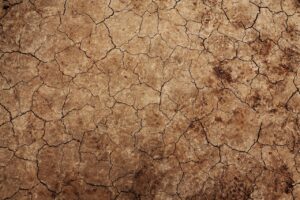Physical changes can either be reversible or irreversible. Let us discuss some physical irreversible change examples.
- Cutting trees into logs
- Broken glass
- Growth of tree
- Pulverizing a rock
- Mixing paint colors
- Cracking an egg
- Shredding paper
- Sharpening pencil
- Stitching dress out of a piece of fabric
- Rock erosion
- Grinding wood into sawdust
- Chopping vegetables
Cutting trees into logs

Image Credit: https://pixabay.com/vectors/tree-log-fallen-cartoon-nature-576846/
This is one of the most common physical irreversible change example. On chopping trees to form logs, there is no involvement of internal energy. The chemical elements of the wood and the logs are just the same. It is clearly seen that only the size and shape are changed. Hence it is an example of physical change. But it is not a temporary change that is not reversible. Chopping a tree into small pieces of wood or logs is an irreversible change as we cannot obtain the whole tree back from these logs. Once the cutting is done, it becomes a permanent change.
Broken glass
When we drop a bowl made of glass, it accidentally gets broken into many smaller pieces. The small pieces of glass and the bowl as a whole are of the same material. We can find that the glass’s internal energy and chemical reactivity remains the same. But can we get back the bowl from the shattered and broken pieces of glass? The answer would be no. Of course, we can not bring back the bowl. Even if we try to weld the glass to join the pieces, we won’t get the exact bowl. So broken glass is an example of irreversible physical change.
Growth of tree
The growth of a small plant into a big tree is a unique chance. It is an example of both physical and chemical change; as for the growth of the tree, a chemical reaction such as photosynthesis occurs. The growth of a tree leads to stretching and growth of its branches and heights; hence it is also a physical change since we can not reverse and bring a seedling or a small plant back from a tree, so it is an irreversible change.
Pulverizing a rock
Breaking down the rocks into smaller and minute particles by either crushing, grinding, or beating them is known as pulverizing. The rock gets changed into powder form, but the chemical reactivity before and after the pulverization remains the same. Therefore, pulverizing a rock is classified as a physical change. Further, once the rock is crushed down, it can not be undone; that is, we can not bring it back to its original position. So we can say that pulverizing a rock is one of the physical irreversible change examples.
Mixing paint colors

Image Credit: https://pixabay.com/vectors/palette-paints-colors-mixing-33882/
Mixing paint colors to obtain a new color is another example of irreversible physical change. When paints are mixed, no new substance is formed; only the color is changed. The zero change in the internal energy of the object makes it a physical change. Secondly, once a new color is obtained, we can not bring back the exact same colors no matter what color we obtain. Therefore mixing paints together is an irreversible change.
Cracking an egg
A cracked egg is the simplest example of physical change. When the shell is cracked, the egg comes out, as only the shape is changed; it is considered as a physical change. Further, we know that it is in no way practical to make the cracked eggshell go back to its initial position. Also, it is obvious that in no way can it be put back into the shell. So cracked egg is an irreversible physical change.
Shredding paper
We all know that shredding or tearing paper is a physical change, as only the size and shape of the paper are changed without altering its chemical composition. A sheet of paper is changed into strips of paper. Now once the paper is shredded into strips, it becomes impossible to bring back the original sheet. Some might question that by sticking the paper strips with tape, we can recover the paper. But that’s not the reality, the shape and size remain distorted to some extent, and the exact original piece of paper can not be restored. Hence it is also one of the physical irreversible change examples.
Sharpening pencil
When we sharpen the pencil every time, its size gets reduced. The change in the size of the pencil makes it a physical change. Secondly, since the process can not be undone, the pencil size can not be increased; it is irreversible. The sharpener only cuts the wood or graphite of which the pencil is made. It brings no change in the atomic structure or composition of wood and graphite.
Stitching dress out of a piece of fabric
For stitching a dress out of a piece of fabric, it has to be in different shapes. Since the dress is made of fabric, its chemical nature would be the same. Firstly as only the shape and size of the fabric are altered, it is a physical change. Now once the dress is stitched, can the process be reversed? Of course not. We can bring back the initial fabric out of the piece of the dress. Even if we cut out the stitches, some of the parts of the fabrics can not be undone. Hence the stitching of a dress out of a piece of fabric is a physical irreversible change example.
Rock erosion
Erosion is a natural phenomenon involving removing natural resources from their initial positions due to weathering. The rock erosion is the same but with one exception; it does not involve the movement of rocks. Rock erosion or weathering is the phenomenon in which the rocks are broken down into smaller pieces and change into the soil. The chemical constituents of the rock before and after the erosion remains the same. So it is considered as a physical change. Once the rock is changed into the soil, it can not be reversed back; hence it is an irreversible physical change.
Grinding wood into sawdust
The grinding of the wood changes it into sawdust. The sawdust has the same atomic stability and chemical structure as the wood. Due to no change in internal energy, it is termed as physical change. During this process, the wood just changes into minute powder. It is impossible to generate the wood from the sawdust; therefore, it is also an irreversible change.
Chopping vegetables
Chopping vegetables is another physical irreversible change example. When we cut or slice vegetables into small pieces for cooking, only the size is changed, and everything else like chemical constituents remains the same. Also, once the vegetables are chopped, they can not be brought back into their original state. Since this process can not be reversed using any method, therefore, it is an irreversible change.
All these are the physical irreversible change examples. Through these, we get to know that physical change does not necessarily have to be reversible; it can be irreversible too. Now we can define physical change as the reversible or irreversible change that occurs about the object’s physical properties.
Also Read:
- Micrometer read micrometer types important facts
- Anatomy of the human ear
- Law of detachment examples
- Hammer drill for concrete
- Overtones and harmonics
- How to find coefficient of kinetic friction
- Chromatic aberration
- Is calcium malleable
- Doppler effect for moving observer
- Robot welding types characteristics
Hi,
I am Rabiya Khalid, I have completed my masters in Mathematics. Article writing is my passion and I have been professionally writing for more than a year now. Being a science student, I have a knack for reading and writing about science and everything related to it.
In my free time, I let out my creative side on a canvas.



